January 21, 2022
Susan woke up feeling better, at last. We both were able to enjoy the hotel’s enormous breakfast spread before heading out to explore.
We’d bought tickets for the Metro de Medellín the day before so we could get to farther away parts of the city than our legs could take us, and it was even cheaper than Ubers. A US$.70 fare will take you anywhere the Metro de Medellín system goes. We like taking public transit because it’s a great way to see local communities and people watch. We’ve used the New York City subway, the Washington D.C. Metro, San Francisco’s Bart, Chicago’s L, Philadelphia’s SEPTA, the London Underground, and the Paris Métro, but we agreed the Metro de Medellín was the nicest and cleanest metro system we’d ever been on.
After a ride across town, we looked for our tour guide outside the appointed metro stop. The “Comuna 13 and Graffiti Walking Tour” was a small group tour that would give us a fairly in-depth education about Comuna 13, a section of Medellín with a particularly violent past and which now is filled with extensive street art. Our guide, who lived in the comuna and spoke reasonably good English, steered us through the confusing web of hilly, narrow streets and informed us about the history and culture as only a local could.
At one point on the tour, our guide had us look up to where houses are built haphazardly on the sides of steep hills, all constructed of a similar orange/brown brick seen throughout the city. We learned that in Comuna 13 and a number of the other comunas around Medellín, there are no roads into the densely-packed houses, only steep, very narrow paved walking paths.
The guide explained that as recently as 20 years ago Comuna 13 was controlled by four terrorist groups and it was one of the most dangerous places in the world. We stopped at a corner as our guide explained that when the gangs were in control, we couldn’t have crossed the street without risking death because we’d be crossing one of the “invisible borders” the gangs had delineated. Even the police would not come up into the hills. The poor, sprawling hillside barrio was also used as a drug transit route in and out of Medellín by gangs controlled by Pablo Escobar.
In 2002, the government launched Operation Orión to clear out the gangs. They raided the entire area, killing somewhere between 70 and 300 residents (depending on who you believe), many of whom were not even affiliated with gangs. In addition, hundreds of people disappeared or were illegally detained and thousands were displaced. Our guide pointed out an area where the government is now attempting to excavate a gigantic mass grave high on a hill where many of the bodies were dumped during Operation Orion. The operation was brutal but afterwards Comuna 13 mostly recovered. Crime plummeted and the barrio is now considered relatively safe.
As we made our way up the hillside into the center of Comuna 13, the area started to change. The streets narrowed to motorcycle-width only, then disappeared altogether. Street art began to appear, and soon it was literally everywhere.
The entire Comuna 13 community is now filled with incredible street graffiti, which is encouraged. After Operation Orion, the local government sent free paint to the homes of at-risk youth to give them a creative outlet. Then local businesses and schools followed suit. They wanted to add a renewed sense of identity and color to the daily lives of the community by commissioning local artists. It worked.
Many of the murals memorialize the Operation Orion tragedy and serve as reminders of the conflicts that plagued the community for decades. The colorful art on display represents a bright, hopeful future and brings tourists to an area that was once considered off-limits.
We found ourselves spellbound by the diversity and scale of the art. Everywhere we walked the generic red/brown bricks and grey walls which dominate the poorer sections of Medellín were transformed into a color explosion. Now, it’s nearly impossible to find a blank wall in Comuna 13 and the artists have begun painting new pieces on top of older ones that are deteriorating.
We began making our way up the hills of Comuna 13 by climbing many sets of stairs. Out of breath, most of our tour group was relieved when eventually we reached the escalators. Part of Comuna 13’s recovery was accomplished with the 2012 installation of a 1,000-foot-long series of bright orange-covered escalators that, along with extension of the metro system and cable cars going up the steep hills, now connect the comuna to the rest of the city.
The comuna is now a bustling scene, with locals going about their business in small shops and houses that fill every crevice along the walking paths and escalators. Our guide led us along narrow passageways filled with residents and a sprinkling of other tourists. The tour ended at the top of the hill in Comuna 13. From what was essentially a rooftop we had great views of the hills of the city and beyond.
After the sobering tour, we took the Metro toward the Laureles section of the city—one of the most popular places for middle-aged ex-pats in the city. Laureles is largely a residential, laid-back and somewhat upscale section of Medellín, with lush, wide tree-lined streets. In other words, the complete opposite of Comuna 13.
The metro doesn’t quite go all the way to Laureles so visitors often take an Uber there, but we opted to walk from the nearest metro stop a few miles away. It’s not as hilly as El Poblado where our hotel was and definitely not as hilly as Communa 13, so the walk there, while long, was relatively easy.
Eventually, we reached our first stop—a gelato shop on the edge of the Laureles area that Susan read about. It’s not known for the quality of the gelato as much as for what’s in it—any flavor with “Maria” in its name was mixed with cannabis. We sat at a small table along the sidewalk and shared a small cup of Choco Maria. It turned out to be a bit stronger than either of us expected.
The roads in Laureles are somewhat circular and confusing (or maybe that was the effect of the cannabis) but eventually we found the central area where there were lots of cafes, parks, restaurants and boutiques. We alternately relaxed in a small park near the central area and wandered about, window shopping and people watching.
Dinner found us at a local institution called Crêpes and Waffles. It sounded a little too much like the Waffle House restaurants in the U.S. to me but Susan said it had great reviews and it had a nice outdoor seating area. Plus, it was one of the few restaurants open for dinner while it was still light out. The meal was easily as amazing as the one the night before, with our huge shared dessert possibly one of the best we’ve ever had. It consisted of a warm waffle piled with delicious ice cream, a large mound whipped cream, fresh mystery fruits, chocolate, caramel, and other yummy toppings—for less than US$3. Our limited Spanish apparently worked in our favor, since we misunderstood the choice of toppings to mean we could choose any, so we chose them all.
The Uber drive back to our hotel was by far the craziest yet. Our machismo driver must have fantasized that he was racing in a Grand Prix as we rocketed around corners, tires screaming, and darted through the tiniest of holes in traffic, all the while the driver was honking his horn and singing at the top of his lungs along with the radio. It was fascinating and terrifying at the same time. I tried not to look and thought that at least we’re too old to die young.

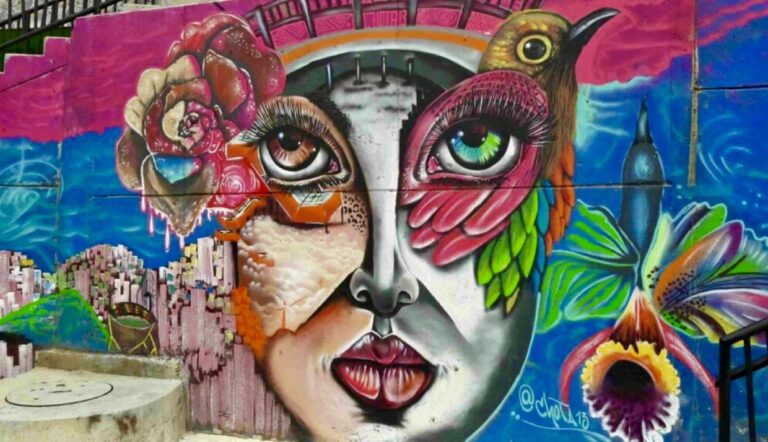
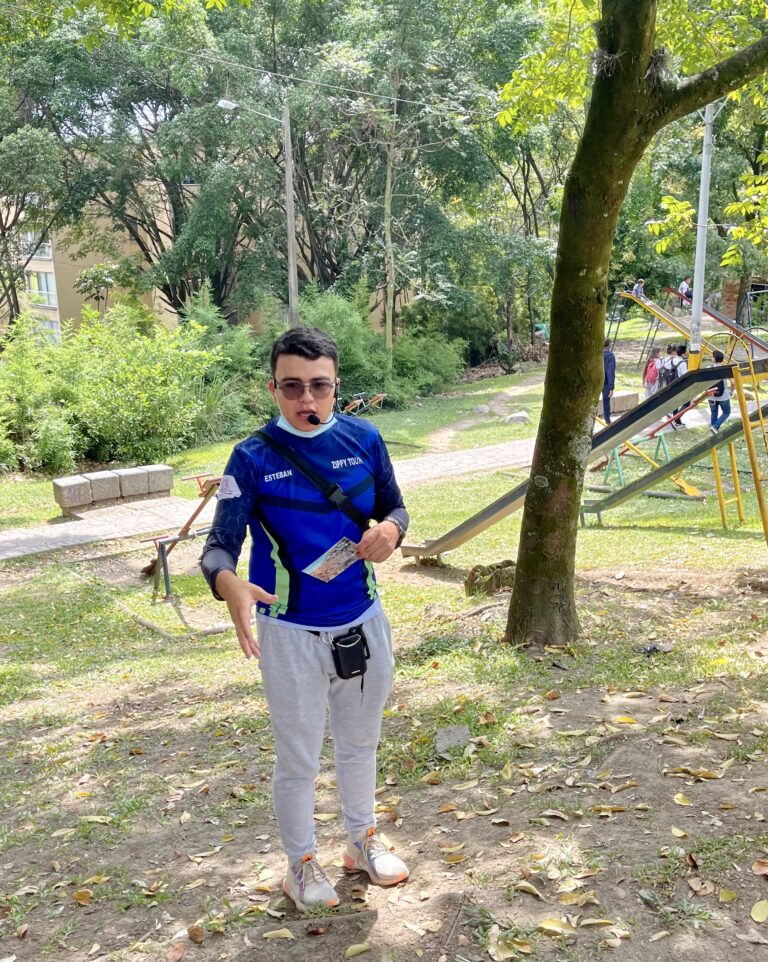
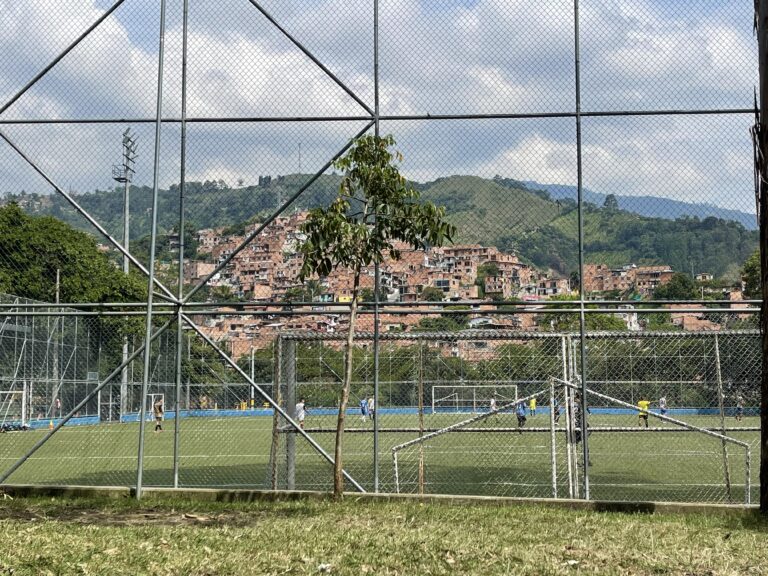
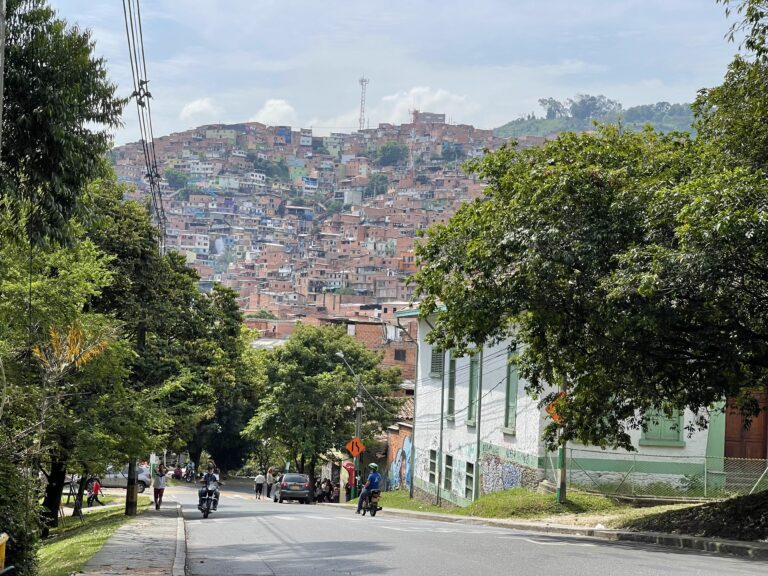
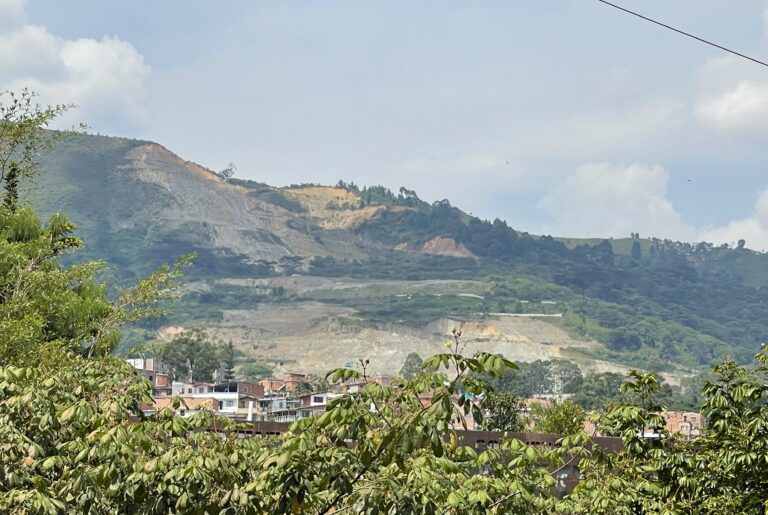
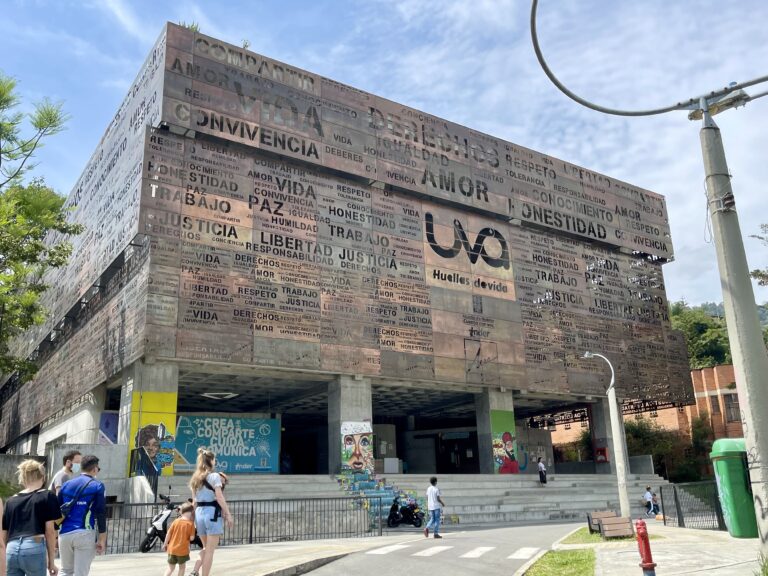
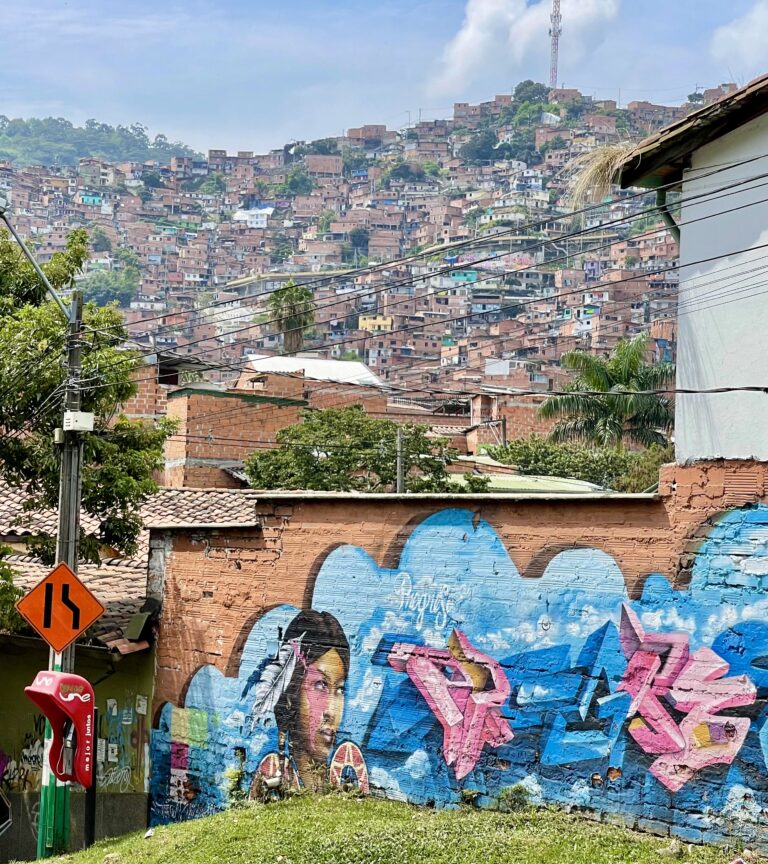
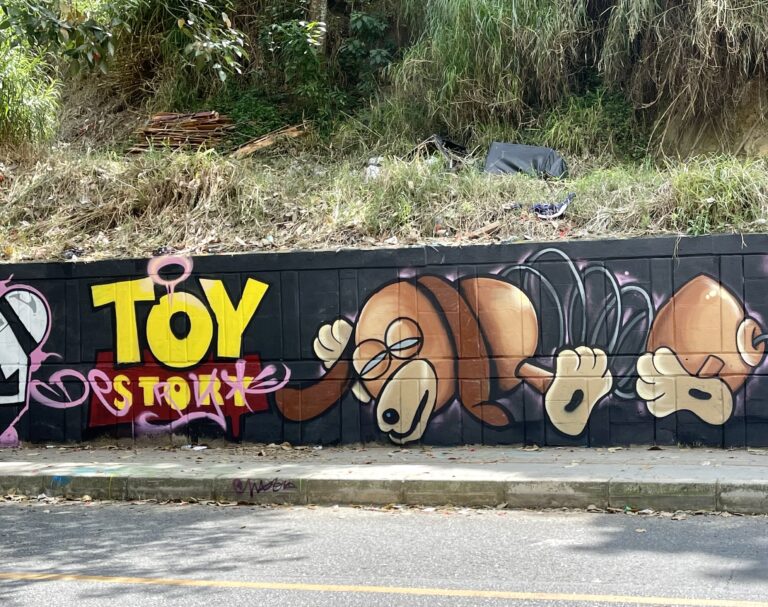
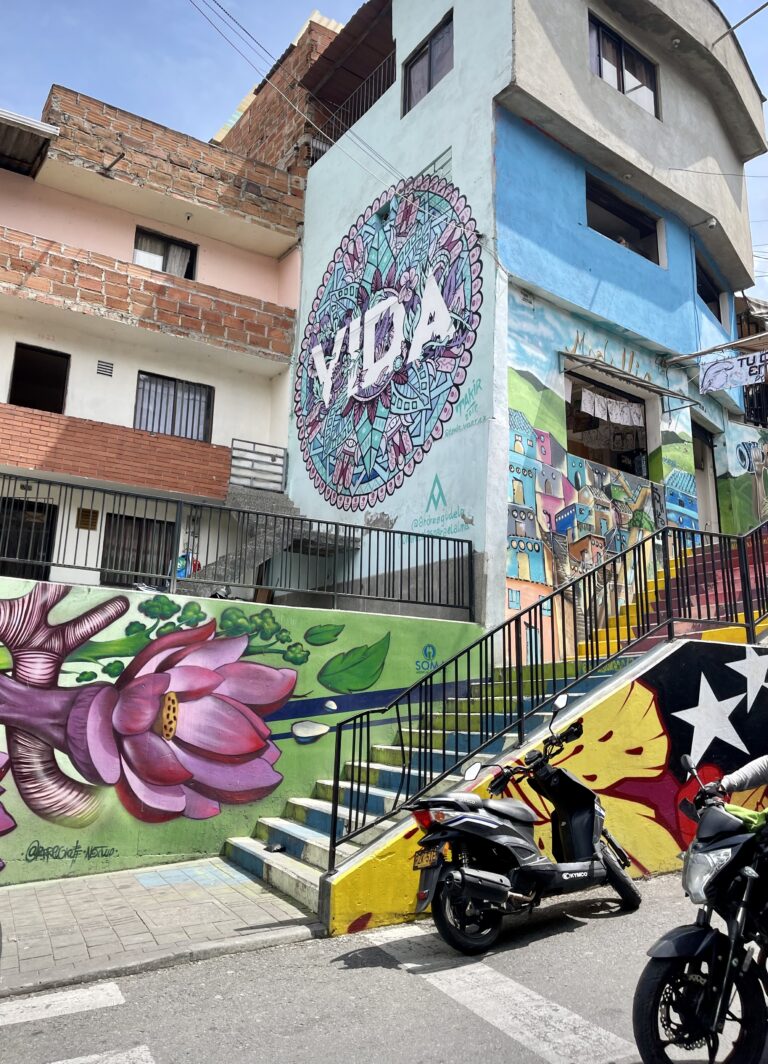
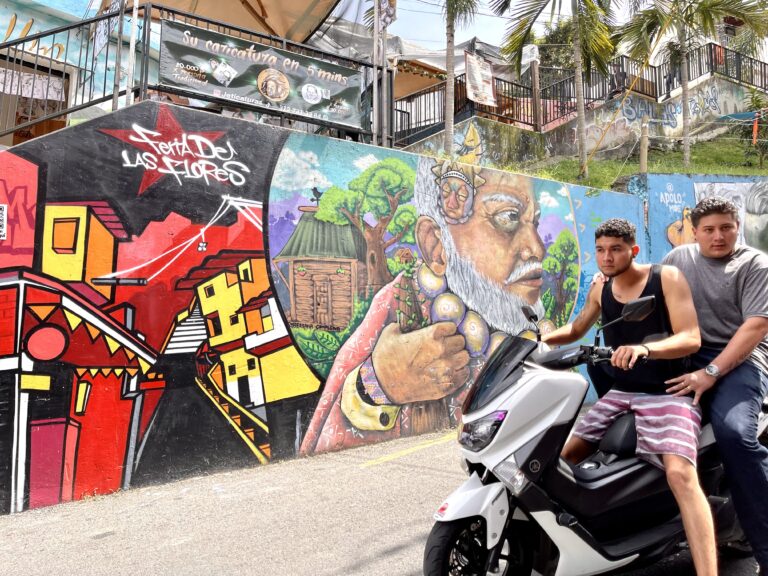
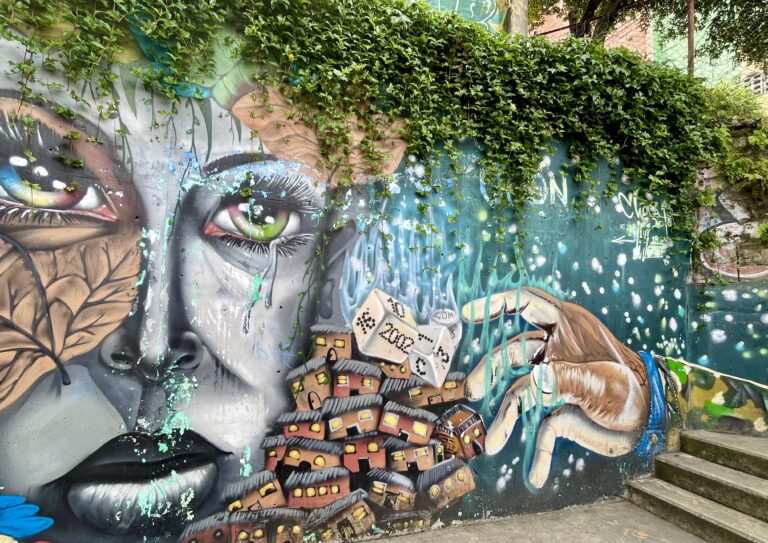
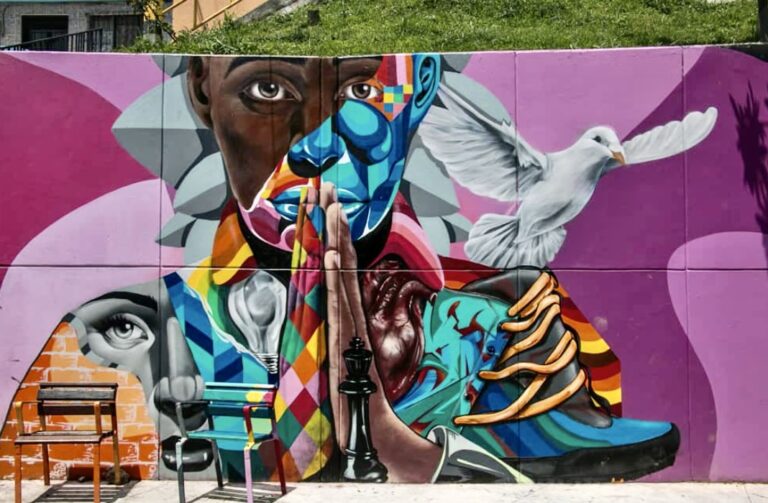
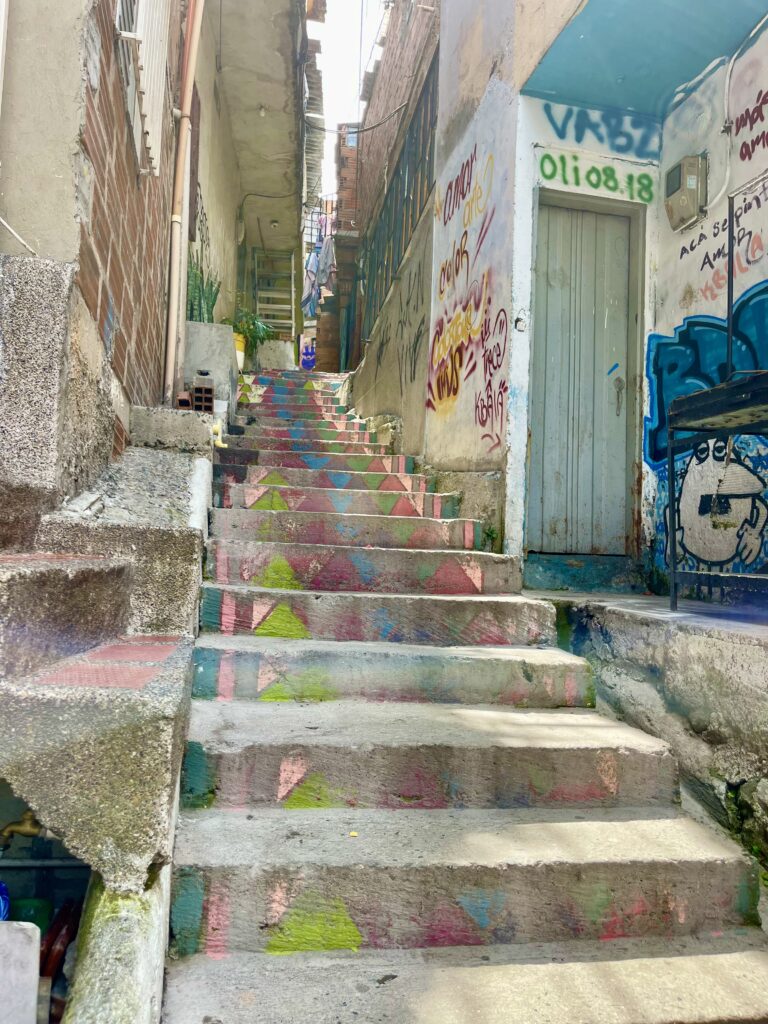
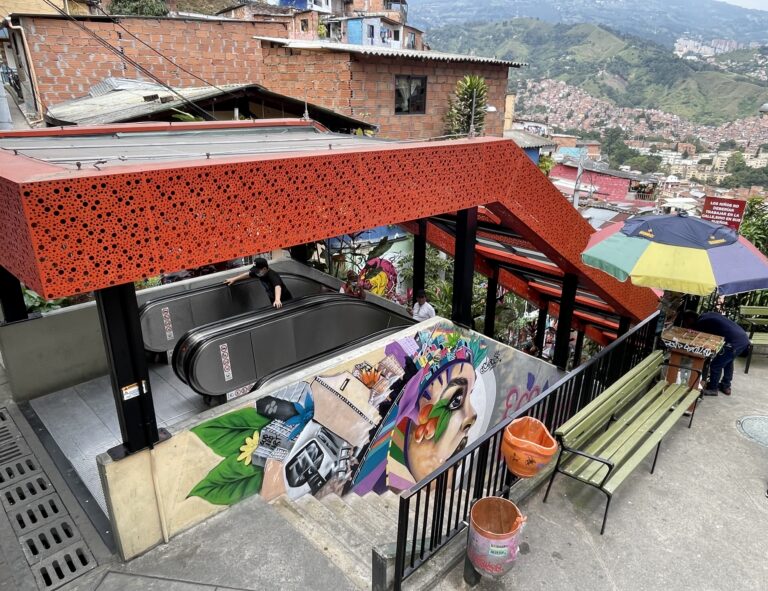
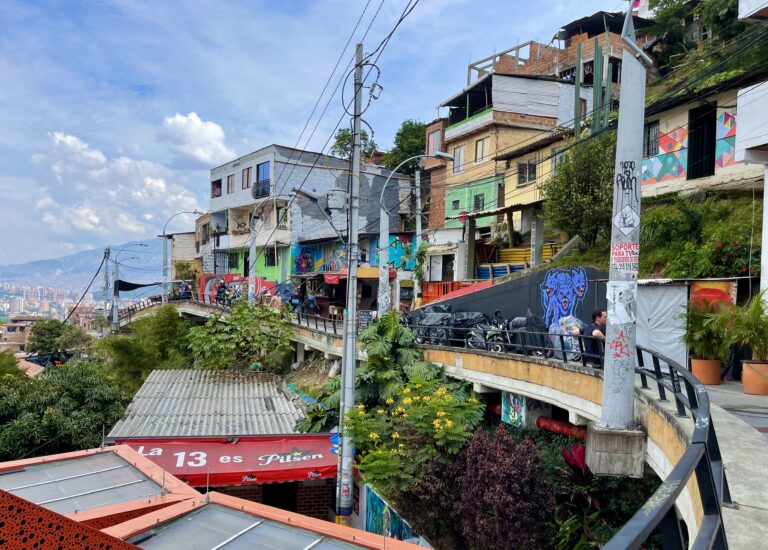
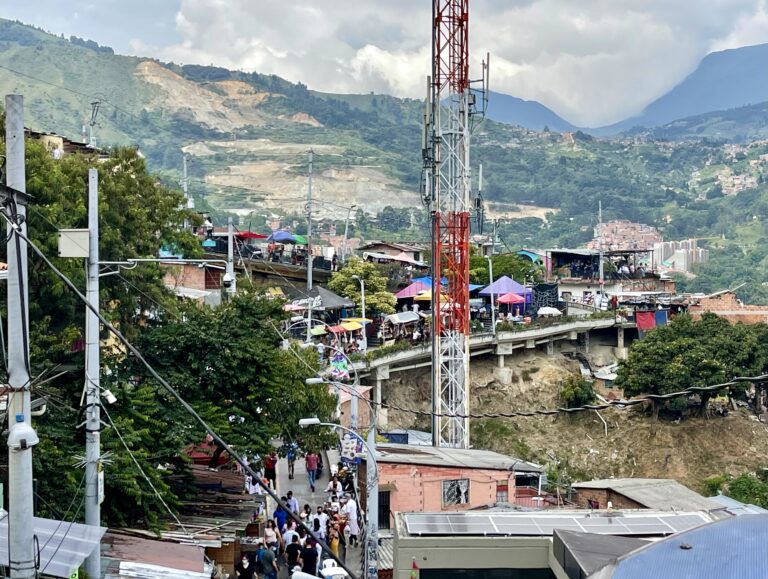
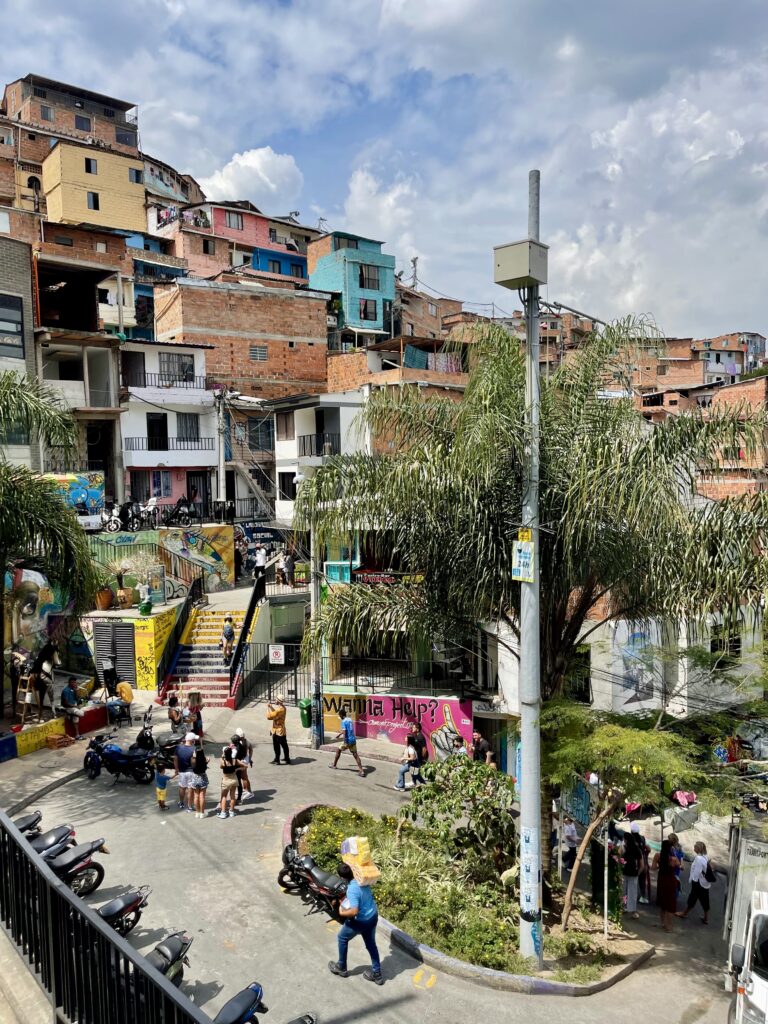
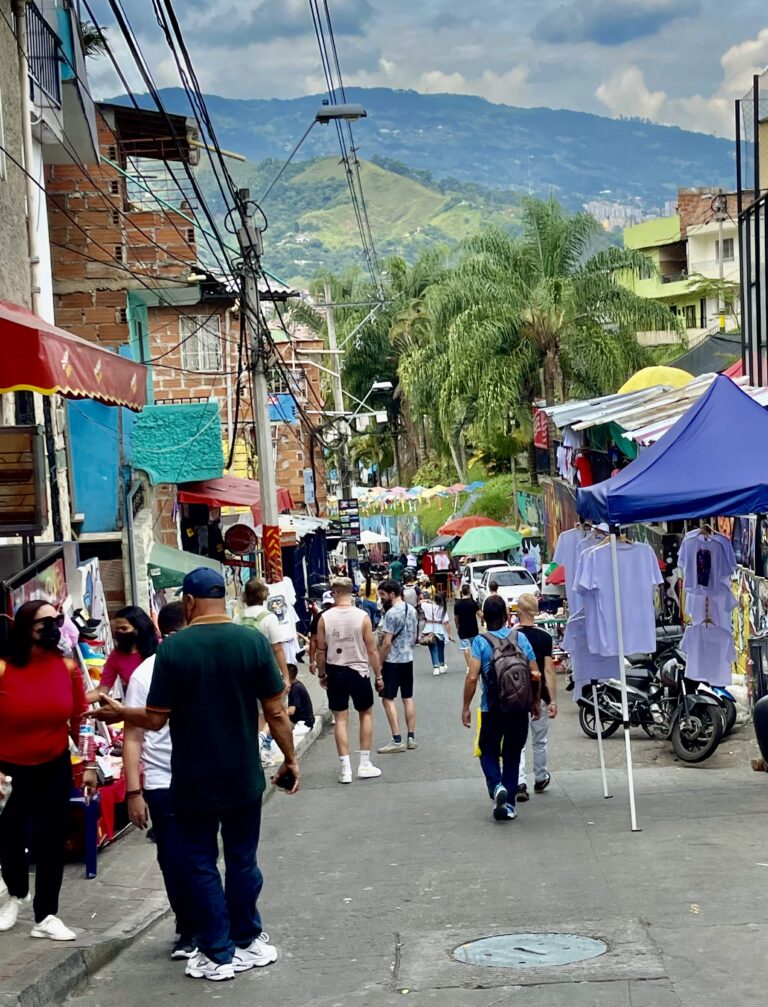
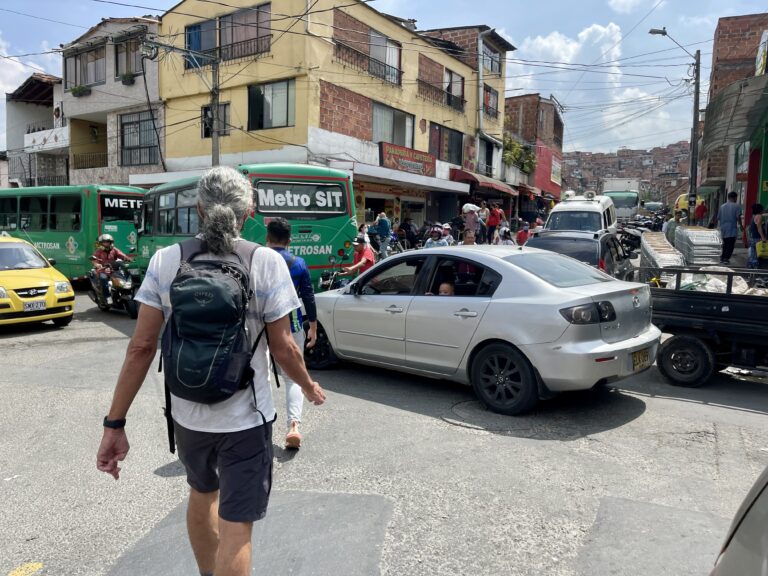
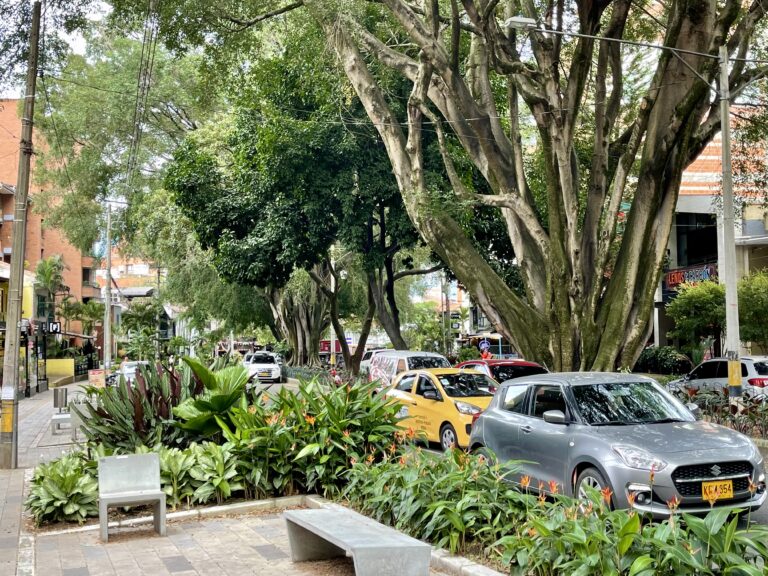
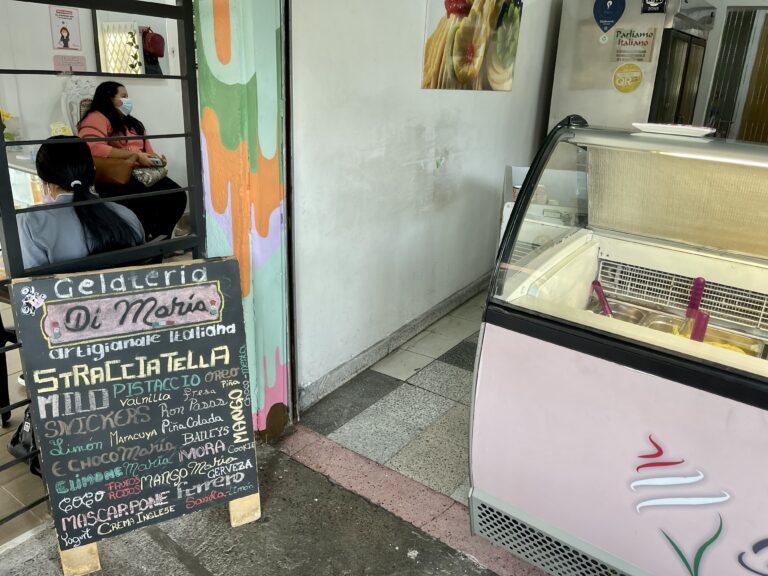
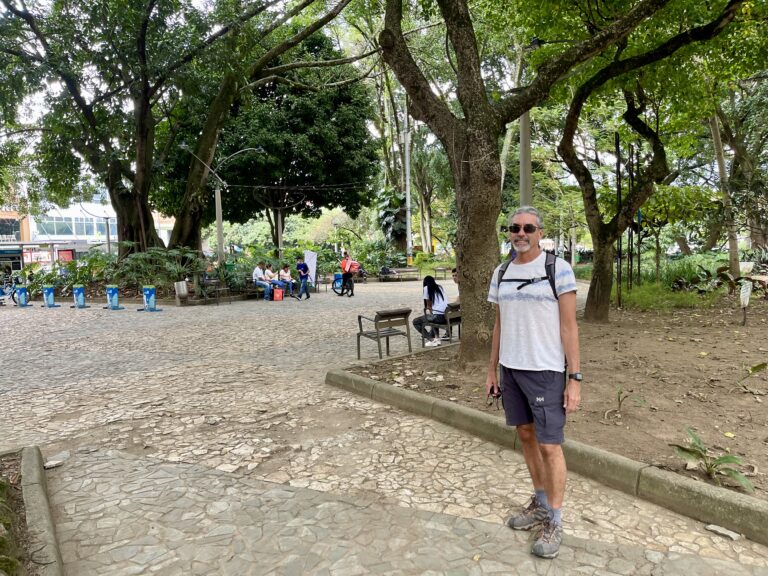
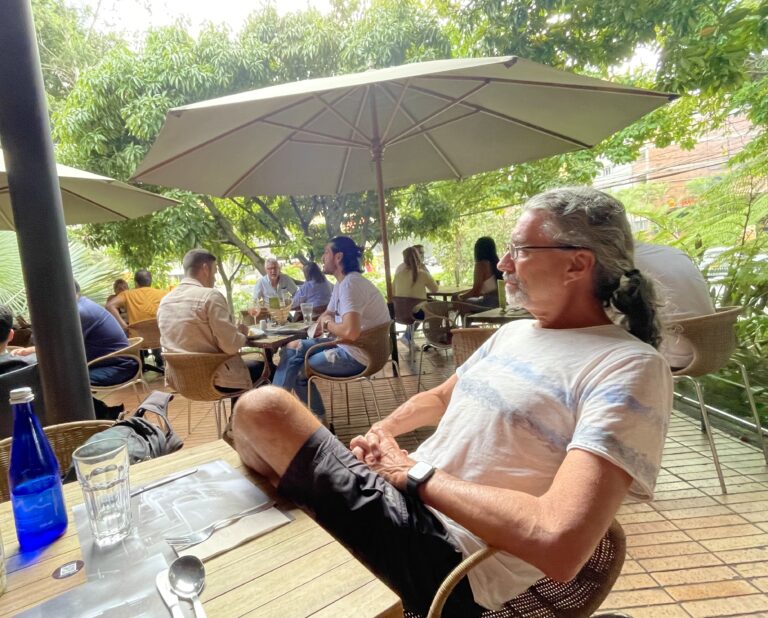
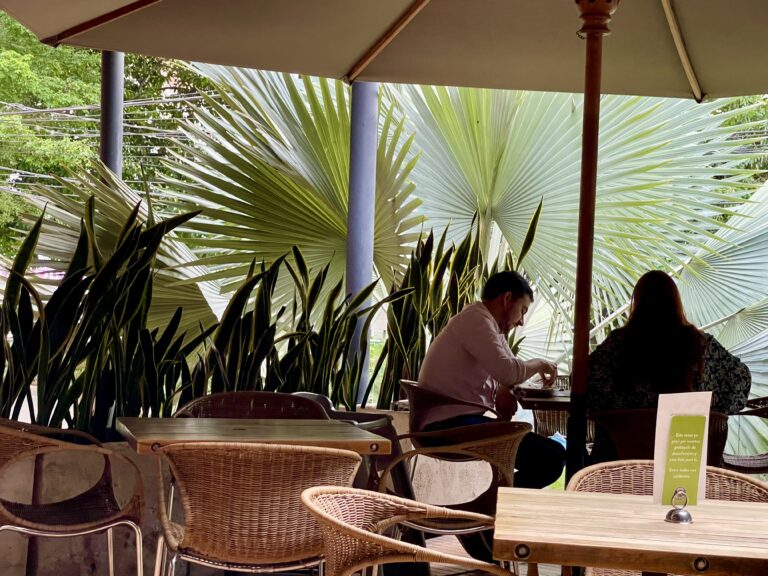
One Response
I love the street art. Something like Philly’s murals, but a lot different too. Can’t wait to visit South America next year!